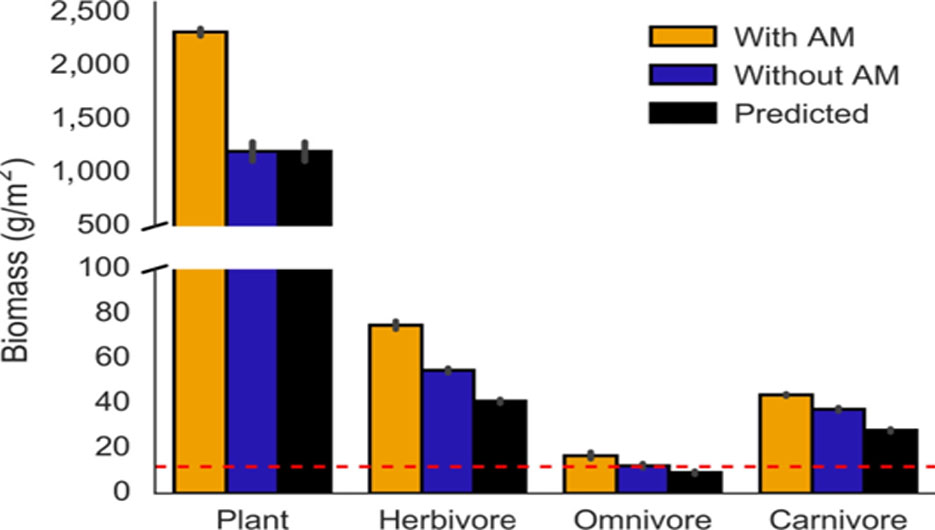
Organisms that provide essential ecosystem functions are often taken for granted, and it is only when their functions are compromised or eliminated that we recognize and value their importance. It is easy to take arbuscular mycorrhizal (AM) fungi for granted.
It is known that tropical grasslands such as the Serengeti harbor large AM populations and that they respond to abiotic and biotic factors. AM symbioses are also known to be important for the uptake of essential plant nutrients, which, in turn, influences the biomass and nutritional quality of herbivores and their predators. The purpose of this study was to investigate the influence of AM symbioses on the biomass of different trophic levels of an ecosystem.
The study conducted by these researchers shows that phosphorus inputs through AM symbioses substantially increase the ability of plants to grow and maintain nutritional quality, cascading through the biomass of consumers and predators in the ecosystem. Although they represent less than 1% of total biomass, the nutritional benefit provided by MAs increased the biomass of macroorganisms in the Serengeti by 48%. When considering biodiversity management, future ecosystem models should take into account the influence of arbuscular mycorrhizal fungi at all trophic levels.
GRAPHIC. Average biomass (g/m2) for four trophic levels estimated from a Serengeti model with arbuscular mycorrhizal (AM) fungi (“With AM”; yellow), a simulated Serengeti without arbuscular mycorrhizas (“Without AM”; blue), and the hypothesised effects of decreased nutritional quality of plants due to reduced phosphorus inputs in a Serengeti without mycorrhizas (“Predicted”; black). Error bars indicate a 95% confidence interval across the study area. For comparison, a dashed red line was added to indicate the average estimated AM fungal biomass (g/m2) in the Serengeti.
Stevens BM, Propster J, Wilson GWT, et al. Mycorrhizal symbioses influence the trophic structure of the Serengeti. J Ecol. 2018;106:536–546. https://besjournals.onlinelibrary.wiley.com/doi/full/10.1111/1365-2745.12916


